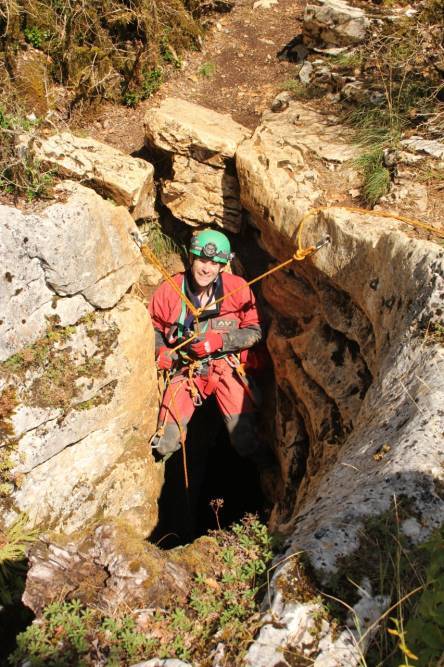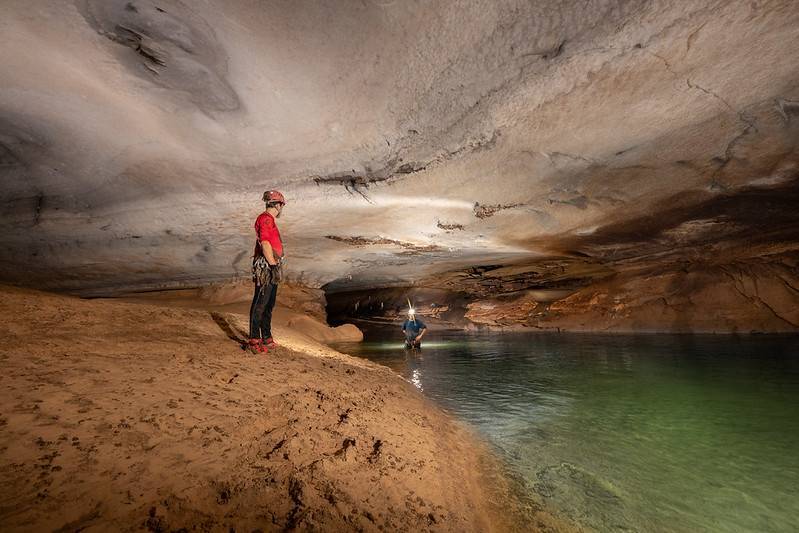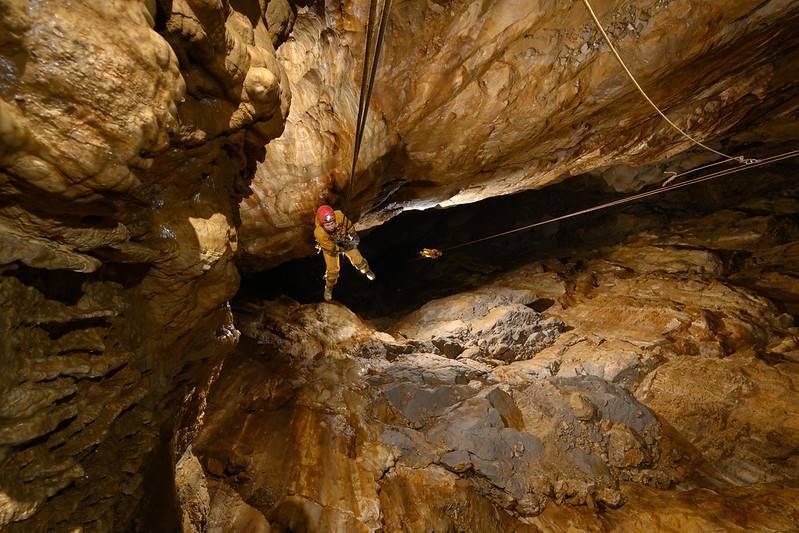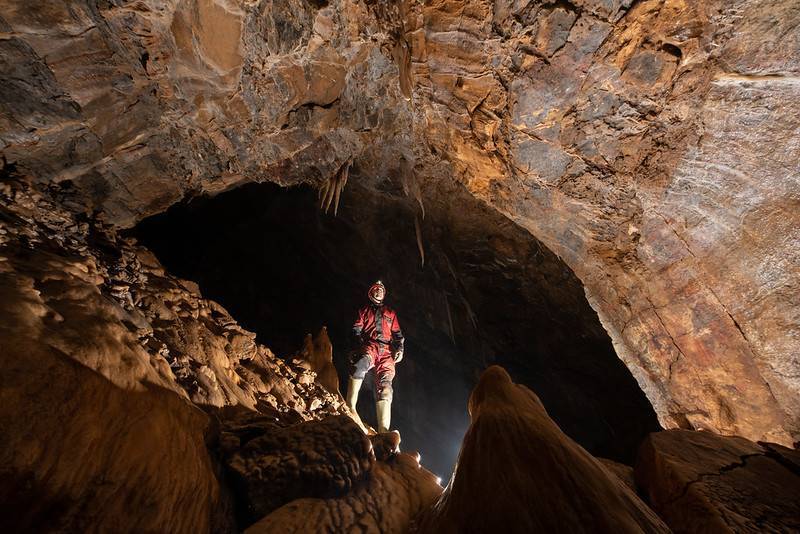Cave rescues and what they can teach us about leadership

As a seasoned caver, Programme Manager Richard Webber recounts his involvement in the recent cave rescue in the Brecon Beacons. Reflecting on the successful rescue mission, he draws parallels between rescuers and leadership teams when it comes to the trust needed to stay on course and accomplish shared goals.
Most of you will have seen the news coverage of the recent cave rescue in the Brecon Beacons. I have been a caver for over 20 years, and as a member of the Mendip Cave Rescue organisation, I received an alert to attend the incident in South Wales.
The call came in on Sunday morning and I checked in with the incident response team already onsite near the cave in South Wales. Driving from my home in Hampshire, I prepared my equipment and received a briefing before entering Ogof Ffynnon Ddu at 3am on Monday morning. My contribution to the rescue was part of a large team of well-organised individuals and since then I have been reflecting on what the experience shows about leadership.
A clear goal
Every person involved in a rescue operation knows that the goal is the successful transfer of an injured person from out of the cave, while not causing the casualty or anyone else further injury. With no clear justification, no one would lose a night’s sleep and willingly go underground at 3am to spend nine hours moving a heavy object.
For me, this illustrates that people will go above and beyond to achieve brilliant things when they know why they’re being asked to do it and agree with the value of the goals.
Clear direction and delegation of roles
The right decisions need to be made quickly and based on available advice (such as the right time to move the casualty or put out the call for further help). Without a clear plan and communication, the rescue would have taken longer, the injured caver would have deteriorated or there could have been further risk of some volunteers becoming injured themselves.
Rescue leaders issue clear instructions on what they want people to do from delivering medication, keeping lines of communication open, carrying the stretcher, and monitoring the time that rescuers are underground. If these roles are not clearly defined, then the operation could resemble chaos. Clear direction without ambiguity is essential, particularly in a pressured situation.
Empowerment and team agility
Despite clear briefings providing precise instructions, it is impossible to cover every eventuality. Although for the first time in a UK cave rescue a system was available which allowed text messages to be transmitted through solid rock, it was not possible to use this equipment at all times, especially in the wet parts of the rescue.
Team leaders and their teams needed to have the remit to react to new circumstances and make quick decisions autonomously, but within the overall constraints of the rescue. Clear direction is needed, but with the ability to empower and set levels of tolerance. This opens opportunities for teams to operate under a management by exception philosophy and deliver output without referring every detail to their management.
Look after each other
Morale is so important, and makes sure that people are coping mentally and physically with what is going on. Sharing chocolate, a sense of humour and an understanding of when to be serious really helps. My lesson here is that those same things are so important in the workplace and it is amazing to see the impact of how genuine care for each other can build resilience, motivation and achieve the seemingly impossible. It can also make a challenging task actually enjoyable!
Anticipating potential risks
In a cave rescue, planning needs to happen several steps ahead. This involves the route (it would be bad to spend several hours in a passage to then discover it is impassable for a stretcher) and getting equipment (such as ropes for hauling the stretcher up a pitch) ready in advance. Planning for risk means that there is a Plan B readily available if something doesn’t work and time is not wasted.
In the cave rescue this week, the casualty was not moved for several hours, both to stabilise his condition and to prepare and plan the rescue operation. Rushing this part of the rescue could have had devastating consequences. This is a good illustration of the need to look ahead, anticipate risk and identify mitigation and contingency plans – all relevant in the workplace.
Having the right skills and tools for the job
This is why cavers rescue cavers. They have the skills and knowledge to negotiate challenging conditions and know how to use the equipment. Cave rescue organisations have regular practices and have equipment ready. They know from trial runs what works in different environments, so when it really matters, they know what they need.
Remember the Thai cave rescue with the youth football team and Elon Musk’s proposal of an inflatable tunnel? There is a reason why the authorities turned to cavers rather than innovators for the operation. Therefore, the leader’s task starts as early as possible in identifying what’s needed and ensuring that the right people are assigned where most valuable.
Celebrating success
The applause when the casualty was brought out of the cave was for them: the people who helped with equipment, administered medication, cooked stew, made tea, provided transport, shared knowledge and of course those who went underground.
Every person involved played an essential role in achieving that positive outcome and all were made aware of it. This has obvious applications to the workplace, highlighting the importance of recognising everyone.
I appreciate that the lessons in leadership illustrated here are for unique circumstances and other leadership styles suit different situations, for example, a more collaborative style might better suit the delivery of many of our organisational goals. I would also never want to discourage well placed innovation. However, there are times when the pressure is on and it just might help to consider a cave rescue style of leadership to achieve brilliant team results.
George is now recovering in hospital and I’m sure you will all join me in wishing him well.







